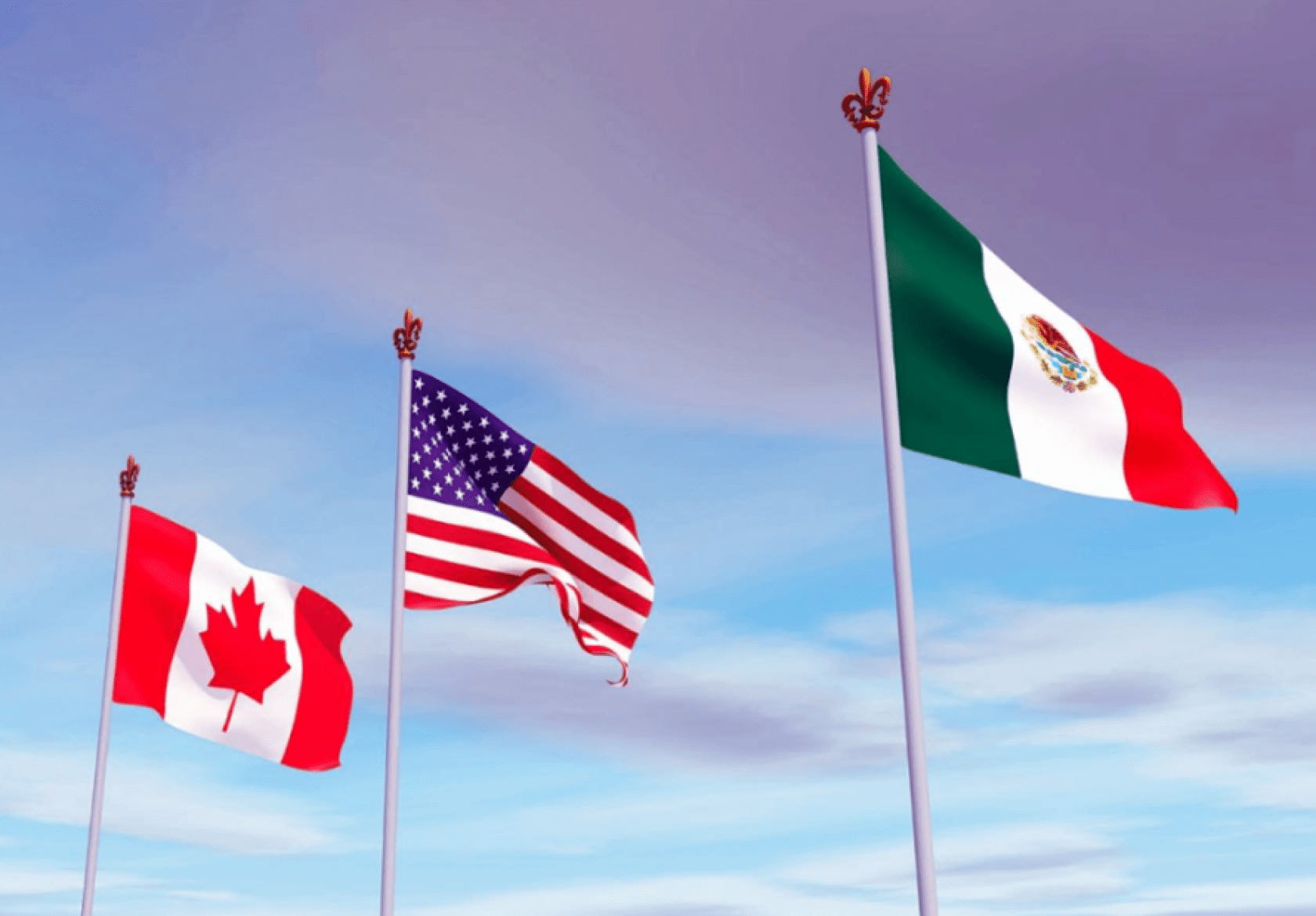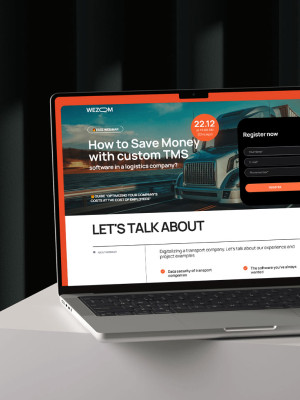Over 63,000 trucks cross the U.S.-Canada and U.S.-Mexico borders each day, making them two of the busiest land crossings in the whole world.

The shipping procedure is largely the same whether a vehicle is transporting goods through the northern or southern border of the United States:
- The same trade agreement is applicable to all products (USMCA)
- Customs and border patrol will have to clear the cargo
- Careful coordination is necessary for shipments between shippers, freight companies, and customs brokers.
.png)
Differences Between Crossing Both Borders
1. The carrier market in Mexico is twice as fragmented as the one in Canada.
Mexico is situated at the meeting point of two continents, which has aided in the growth of a thriving logistics and transportation sector.
However, the Mexican truckload business is incredibly fragmented, much like the U.S. truckload market. There are around 178,000 for-hire carriers there, and more than 80% of them run fleets of one to five trucks.
In contrast, there are around 88,000 trucking firms in Canada.
The Canadian truckload business is still fragmented, but it is easier for American shippers to operate in due to lower linguistic and cultural barriers and a generally better degree of technology.

2. Clearing Canadian customs is an easier process.
An inevitable component of international shipment is customs clearance.
The procedure in Mexico is more difficult compared to Canada for a number of reasons.
- Because of the lower level of technology and internet connectivity, there are frequently more manual duties and paper-based records to keep track of.
- The bigger problem is the language barrier.
- An American and Mexican customs broker is required (for Canada, only the importing side needs a broker).
- There are typically more carriers and drivers involved.
3. Cargo insurance is not carried by Mexican carriers.
Mexican carriers are not required by law to carry cargo insurance, and the vast majority of them do not, despite the high rate of cargo theft.
Because carriers are only responsible for a very little sum, regardless of the value of the cargo, in the event that a shipment is stolen or damaged, there is little incentive for them to purchase insurance.
The situation is different in Canada. Similar to American carriers, Canadian carriers must maintain minimum limits of cargo insurance and third-party liability.

Obtain the Necessary Paperwork for International Shipping
What occurs to all of the tiny package and international freight shipments that don't meet low-value thresholds? Sadly, they're still very form-heavy. However, doing some preliminary research will make it simpler to export your items across the border:
To Mexico: Register as an importer with the Official Register of Importers and submit the following documents: a Mexican Import Request document, a certificate of origin, a commercial invoice (in Spanish), a bill of lading (BOL), a packing list, a shipper export declaration (when the shipment value is $2,500 or more), documentation ensuring the payment of additional duties for undervalued goods, and, if necessary, product safety documentation. Your commercial invoice may occasionally need to be sent in two copies.
To Canada: In addition to the importer's or customs broker's submission of the Customs Coding Form B3-3, additional documentation may be needed depending on the shipment, including a Canada Customs Invoice, certificate of origin, and BOL.
When a Certification of Origin is necessary for cross-border shipping (COO)
A COO is required for every shipment priced at more than US$2,500 that is imported into the United States, more than US$1,000 that is exported to Mexico, or more than CA$3,000 that is exported to Canada. The elements can be provided on any current document, such a commercial invoice or BOL, and fortunately this can be completed by the importer, exporter, or producer, so you have some help.
It must have nine necessary data components:
- The certifier's name (importer, exporter, or maker)
- The name, country, and contact details of the certifier
- The exporter's name, address, and phone number (if not the certifier)
- The name, location, and phone number of the producer (if not the certifier)
- The importer's name, address, and phone number (if not the certifier)
- The Harmonized Tariff Schedule (HSTUS) number and the description of the goods (to, at least, the 6-digit level)
- Origin Standards
- Blanket time (if applicable, date range up to a 12-month period)
- Signature and date, together with the declaration that "I attest that the information in this document is truthful and accurate and that the items listed here are eligible to be considered originating. I acknowledge that it is my obligation to substantiate these claims, and I hereby undertake to keep the supporting evidence current, make it available during a verification visit, and make it available upon request."
Crossing The Mexico-U.S. Border Usually Takes Longer
Depending on traffic, a normal border crossing between Mexico and the United States can take up to five hours or longer.
It typically takes less than an hour at the U.S.-Canada border.
There are a few additional reasons why crossing the border between Mexico and the United States requires more time than we've already mentioned, including:
- There are fewer places for crossing.
Longer than usual is the Canadian border (look at a map). Compared to the southern border's 22 crossing locations, there are 76 in total. - Border traffic has increased. 55% of the 63,000 trucks that enter or exit the United States each day do so via the border with Mexico.
- The busiest border crossing is much more congested. The busiest border crossing in North America is at Laredo, Texas. 36% of all truck traffic—more than 4.6 million vehicles—crossed at the point of entry in the previous year.
In contrast, Detroit, Michigan, which saw roughly 2.7 million truck crossings last year, or 25% of total truck traffic, is the busiest port of entry between Canada and the U.S.
TMS App can be Useful for Crossing any Border

Individualized Options
Examine your international supply chain to develop capacity solutions that satisfy your shipping requirements.
Modern technology
Utilize contemporary technologies to organize, carry out, and monitor your shipping across North America.
Top-notch Documentation
To ensure smooth cross-border transportation, organize the required papers for your goods using technology. Since there is less paperwork to process at the border and new methods like e-signatures and self-certification of origin, cargo can move through customs more quickly.
24/7 Client Support
Around-the-clock customer care representatives are available to address your shipping-related questions.
Exceptional Network
Lower shipping costs and quicker travel times are possible thanks to a large network of truck and rail carriers.
Affordable Prices
You get the most affordable cross-border shipping prices thanks to a variety of best practices and an awareness of carrier tariffs.
The first- and second-largest trade partners of the United States are Mexico and Canada, with a combined $661.1 billion and $665.6 billion in goods exchanged in 2021, respectively.
Simply put, international trade benefits businesses. To guarantee a quick and efficient cross-border shipping voyage, you must still be careful, complete all necessary forms and fields, and be aware of the regulatory restrictions surrounding your individual goods.

